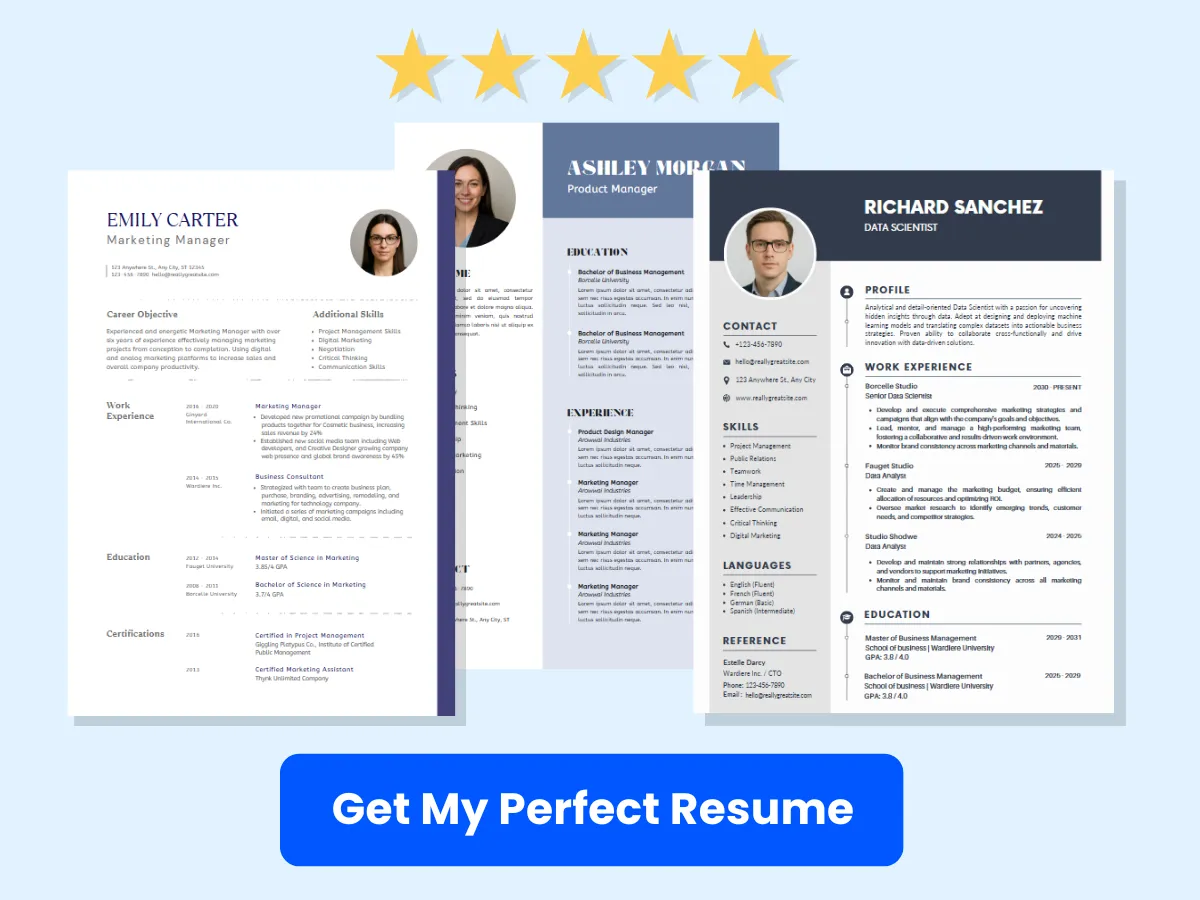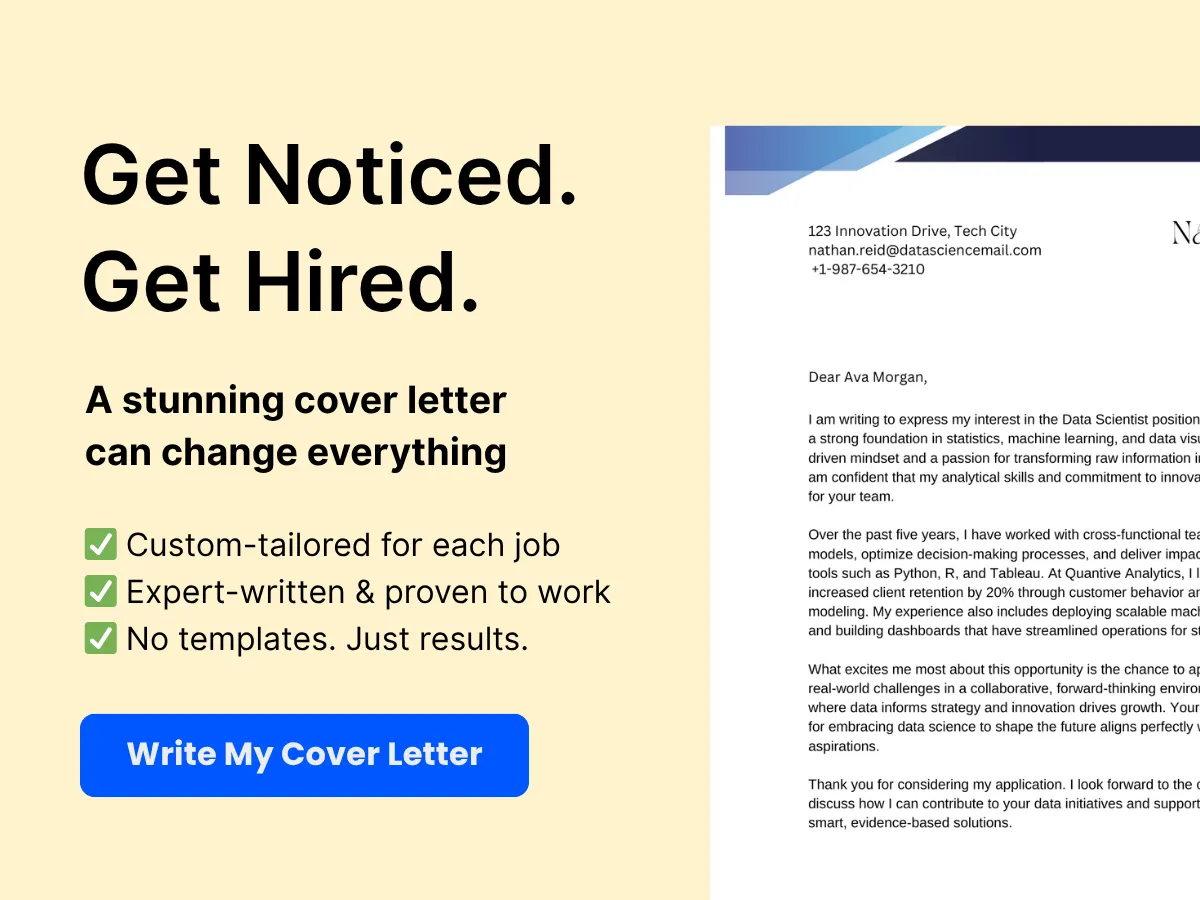A well-crafted resume is your ticket to standing out among a sea of applicants. While listing job duties and responsibilities is a common practice, it’s the accomplishments that truly capture the attention of hiring managers. Highlighting your achievements not only showcases your skills and expertise but also demonstrates the tangible impact you’ve made in your previous roles. This distinction between mere duties and significant accomplishments can be the key to unlocking new career opportunities.
In this article, we will delve into the importance of emphasizing your accomplishments on your resume. You’ll learn how to effectively differentiate between what you were responsible for and what you actually achieved, transforming your resume from a simple list of tasks into a powerful narrative of your professional journey. With 39 key examples at your fingertips, you’ll discover how to articulate your successes in a way that resonates with potential employers, enhancing your resume and increasing your chances of landing that coveted interview.
Whether you’re a seasoned professional looking to refresh your resume or a recent graduate eager to make your mark, this guide will equip you with the insights and tools needed to present your accomplishments in the best light possible. Get ready to elevate your resume and take the next step in your career!
Exploring Accomplishments
Definition of Accomplishments
Accomplishments are tangible outcomes or achievements that demonstrate your skills, abilities, and contributions in various contexts. They are the milestones that showcase your effectiveness in a role, your commitment to personal growth, and your ability to overcome challenges. Unlike mere job duties or responsibilities, accomplishments highlight the impact of your work and provide evidence of your capabilities. They can be quantified or qualified, and they often serve as powerful indicators of your potential value to future employers.
Types of Accomplishments
Professional Achievements
Professional achievements are accomplishments that occur within the workplace and are directly related to your job performance. These can include:


- Sales Targets Exceeded: For example, “Increased sales by 30% within one year by implementing a new customer relationship management system.”
- Project Management Success: “Led a cross-functional team to complete a project three months ahead of schedule, resulting in a 15% cost savings.”
- Process Improvements: “Developed and executed a new inventory management process that reduced waste by 25% and improved order fulfillment times.”
- Awards and Recognitions: “Received the Employee of the Month award for outstanding customer service and teamwork.”
These examples not only demonstrate your skills but also provide quantifiable results that can impress potential employers. When listing professional achievements, it’s essential to use metrics and specific details to convey the significance of your contributions.
Personal Milestones
Personal milestones are achievements outside of the professional realm that can still reflect positively on your character and skills. These can include:
- Volunteer Work: “Organized a community clean-up event that attracted over 100 volunteers and resulted in the removal of 500 pounds of litter from local parks.”
- Personal Projects: “Launched a personal blog that gained over 10,000 monthly visitors within six months, focusing on sustainable living and eco-friendly practices.”
- Fitness Goals: “Completed a marathon, demonstrating commitment, discipline, and the ability to set and achieve long-term goals.”
While these accomplishments may not be directly related to your job, they can illustrate your work ethic, leadership skills, and ability to manage time effectively. Including personal milestones can provide a more holistic view of who you are as a candidate.
Educational Successes
Educational successes encompass achievements related to your academic journey. These can include:
- Degrees and Certifications: “Graduated with honors from XYZ University with a Bachelor’s degree in Marketing.”
- Scholarships and Awards: “Received the Dean’s Scholarship for academic excellence, awarded to the top 5% of students in the program.”
- Research Projects: “Conducted a research project on consumer behavior that was published in a peer-reviewed journal.”
Highlighting educational accomplishments can be particularly beneficial for recent graduates or those transitioning into new fields. It demonstrates your commitment to learning and your ability to apply knowledge effectively.
Why Accomplishments Matter to Employers
Employers are increasingly looking for candidates who can demonstrate their value through specific accomplishments rather than just listing job duties. Here are several reasons why accomplishments matter:


- Evidence of Impact: Accomplishments provide concrete evidence of your contributions and the impact you’ve made in previous roles. This helps employers understand what you can bring to their organization.
- Differentiation: In a competitive job market, accomplishments can set you apart from other candidates. They provide unique selling points that can make your resume more memorable.
- Skills Demonstration: Accomplishments often highlight key skills that are relevant to the job you’re applying for. For instance, if you’ve led a successful project, it showcases your leadership and project management abilities.
- Goal Orientation: Employers value candidates who are goal-oriented and can achieve results. By showcasing your accomplishments, you demonstrate your ability to set and meet objectives.
- Culture Fit: Accomplishments can also reflect your values and work ethic, helping employers assess whether you would be a good fit for their company culture.
Accomplishments are a vital component of a compelling resume. They not only provide evidence of your skills and abilities but also help you stand out in a crowded job market. By understanding the different types of accomplishments and their significance, you can effectively highlight your achievements and present yourself as a strong candidate to potential employers.
Identifying Your Accomplishments
When it comes to crafting a compelling resume, highlighting your accomplishments is crucial. Accomplishments not only demonstrate your skills and capabilities but also provide tangible evidence of your contributions to previous roles. However, identifying these accomplishments can sometimes be challenging. This section will explore various techniques to help you uncover your achievements, ensuring that your resume stands out to potential employers.
Self-Assessment Techniques
Self-assessment is a powerful tool for identifying your accomplishments. It involves reflecting on your experiences, skills, and the impact you’ve made in your previous roles. Here are some effective self-assessment techniques:
- Journaling: Keep a professional journal where you document your daily tasks, challenges, and successes. Regularly writing down your experiences can help you recognize patterns and significant achievements over time.
- Mind Mapping: Create a mind map that visually represents your skills, experiences, and accomplishments. Start with a central theme, such as your current job or a specific project, and branch out to include related tasks and outcomes.
- SWOT Analysis: Conduct a personal SWOT analysis (Strengths, Weaknesses, Opportunities, Threats). This exercise can help you identify your strengths and the accomplishments that stem from them, as well as areas for improvement.
By engaging in self-assessment, you can gain a clearer understanding of your professional journey and the milestones that define it.
Gathering Feedback from Colleagues and Supervisors
Another effective way to identify your accomplishments is by seeking feedback from those who have worked closely with you. Colleagues and supervisors can provide valuable insights into your contributions that you may not have recognized yourself. Here are some strategies for gathering feedback:


- One-on-One Meetings: Schedule informal meetings with colleagues or supervisors to discuss your performance. Ask specific questions about your contributions to projects and how they perceived your impact.
- 360-Degree Feedback: If your organization offers a 360-degree feedback process, take advantage of it. This comprehensive feedback mechanism allows you to receive input from peers, subordinates, and supervisors, providing a well-rounded view of your accomplishments.
- Peer Recognition Programs: Participate in or review any peer recognition programs within your organization. These programs often highlight individual contributions and can serve as a source of inspiration for identifying your own achievements.
Feedback from others can help you see your accomplishments from different perspectives, making it easier to articulate them on your resume.
Reviewing Past Performance Reviews and Reports
Your past performance reviews and reports are treasure troves of information regarding your accomplishments. These documents often contain specific examples of your contributions, strengths, and areas for improvement. Here’s how to effectively review these materials:
- Identify Key Themes: Look for recurring themes in your performance reviews. Are there specific skills or accomplishments that are consistently highlighted? These themes can guide you in selecting the most relevant achievements for your resume.
- Quantify Your Achievements: Performance reviews often include metrics or ratings that can help you quantify your accomplishments. For example, if you received a rating of “exceeds expectations” in a particular area, consider how you can translate that into a specific achievement statement.
- Highlight Promotions and Awards: If your performance reviews mention promotions, awards, or recognitions, make sure to include these in your resume. They serve as strong indicators of your accomplishments and professional growth.
By thoroughly reviewing your past performance evaluations, you can extract valuable information that showcases your achievements effectively.
Utilizing the STAR Method (Situation, Task, Action, Result)
The STAR method is a structured approach to answering behavioral interview questions, but it can also be an excellent framework for identifying and articulating your accomplishments. Here’s how to use the STAR method to highlight your achievements:
- Situation: Start by describing the context or situation in which you found yourself. This sets the stage for your accomplishment. For example, “In my role as a project manager, I was tasked with leading a team to deliver a critical project under a tight deadline.”
- Task: Next, outline the specific task or challenge you faced. This helps to clarify your responsibilities. For instance, “The project required coordinating with multiple departments and ensuring that all stakeholders were aligned.”
- Action: Describe the actions you took to address the task or challenge. This is where you can showcase your skills and initiative. For example, “I implemented a new project management tool that streamlined communication and tracked progress in real-time.”
- Result: Finally, highlight the results of your actions. Quantify your achievements whenever possible. For instance, “As a result, we completed the project two weeks ahead of schedule, saving the company $50,000 in costs.”
Using the STAR method not only helps you identify your accomplishments but also provides a clear and compelling way to present them on your resume. Each accomplishment can be framed as a mini-story that demonstrates your value to potential employers.
Identifying your accomplishments is a critical step in creating a standout resume. By employing self-assessment techniques, gathering feedback, reviewing past performance evaluations, and utilizing the STAR method, you can uncover and articulate your achievements effectively. This process will not only enhance your resume but also boost your confidence as you prepare to showcase your professional journey to prospective employers.
Structuring Accomplishments on Your Resume
When it comes to crafting a compelling resume, the way you structure your accomplishments can significantly impact how potential employers perceive your qualifications. Accomplishments are the highlights of your career, showcasing your skills, contributions, and the value you bring to an organization. We will explore the best practices for placing and formatting your accomplishments to ensure they stand out and resonate with hiring managers.


Placement of Accomplishments
Where you place your accomplishments on your resume can influence how easily they are noticed. There are two primary strategies for incorporating accomplishments: within job descriptions and in a separate accomplishments section.
Within Job Descriptions
One effective way to highlight your accomplishments is to integrate them directly into your job descriptions. This method allows you to provide context for your achievements, making them more relatable and impactful. When listing your responsibilities for each position, consider the following:
- Be Specific: Instead of vague statements, use specific examples that demonstrate your contributions. For instance, instead of saying “responsible for sales,” you might say, “increased sales by 30% within one year by implementing a new customer relationship management system.”
- Use the STAR Method: Structure your accomplishments using the STAR method (Situation, Task, Action, Result). This approach helps you articulate the context of your achievement and the impact it had on the organization.
- Prioritize Relevance: Tailor your accomplishments to align with the job you are applying for. Highlight achievements that are most relevant to the position to capture the employer’s attention.
For example, if you worked as a marketing manager, your job description might look like this:
Marketing Manager - ABC Company, City, State (Year - Year)
- Developed and executed a digital marketing strategy that increased website traffic by 50% in six months.
- Led a team of five in launching a new product line, resulting in a 20% increase in market share.
- Implemented a customer feedback system that improved customer satisfaction ratings by 15%.
Separate Accomplishments Section
Another effective strategy is to create a separate section dedicated solely to your accomplishments. This approach allows you to showcase your achievements prominently, making them easy to find. Here are some tips for structuring this section:
- Title the Section Clearly: Use a clear and concise title such as “Key Accomplishments,” “Achievements,” or “Professional Highlights” to draw attention to this section.
- Limit to the Most Impactful: Focus on the most significant accomplishments that demonstrate your skills and contributions. Aim for 5-10 bullet points that highlight your best work.
- Use a Consistent Format: Maintain a consistent format for each accomplishment, including the action taken, the context, and the result achieved.
For instance, a separate accomplishments section might look like this:
Key Accomplishments
- Increased annual revenue by $500,000 through strategic partnerships and targeted marketing campaigns.
- Reduced operational costs by 25% by streamlining processes and renegotiating vendor contracts.
- Successfully managed a cross-functional team to deliver a project three months ahead of schedule.
Formatting Tips
Once you have determined where to place your accomplishments, the next step is to format them effectively. Proper formatting can enhance readability and ensure that your achievements are easily digestible for hiring managers.


Bullet Points vs. Paragraphs
When it comes to presenting your accomplishments, bullet points are generally more effective than paragraphs. Here’s why:
- Improved Readability: Bullet points break up text and make it easier for hiring managers to scan your resume quickly. This is crucial, as many employers spend only a few seconds reviewing each resume.
- Highlight Key Information: Bullet points allow you to emphasize important achievements without overwhelming the reader with dense paragraphs.
- Conciseness: Bullet points encourage brevity, helping you to convey your accomplishments succinctly.
For example, instead of writing a long paragraph about your achievements, use bullet points to clearly outline each accomplishment:
Project Manager - XYZ Corp, City, State (Year - Year)
- Led a team of 10 in the successful launch of a new software product, achieving a 95% customer satisfaction rate.
- Coordinated with stakeholders to ensure project milestones were met, resulting in a 20% reduction in project delivery time.
Quantifying Results with Numbers and Metrics
One of the most effective ways to make your accomplishments stand out is by quantifying your results. Numbers and metrics provide concrete evidence of your contributions and help potential employers understand the impact of your work. Here are some tips for incorporating quantifiable results:
- Use Specific Figures: Whenever possible, include specific numbers to illustrate your achievements. For example, instead of saying “improved sales,” say “increased sales by 40% over two quarters.”
- Highlight Percentages: Percentages can effectively convey the significance of your accomplishments. For instance, “reduced customer complaints by 30% within one year” is more impactful than simply stating “reduced customer complaints.”
- Include Timeframes: Adding a timeframe to your accomplishments can provide context and demonstrate your ability to achieve results quickly. For example, “completed a project three weeks ahead of schedule” shows efficiency and effectiveness.
Here’s an example of how to quantify results:
Sales Executive - DEF Inc., City, State (Year - Year)
- Achieved 150% of sales targets for three consecutive quarters, generating an additional $1 million in revenue.
- Expanded client base by 25% through targeted outreach and relationship-building efforts.
Using Action Verbs
To make your accomplishments more dynamic and engaging, start each bullet point with a strong action verb. Action verbs convey a sense of proactivity and achievement, making your accomplishments more compelling. Here are some effective action verbs to consider:
- Achieved
- Implemented
- Increased
- Developed
- Streamlined
- Led
- Generated
- Reduced
For example, instead of saying “was responsible for increasing customer engagement,” you could say “increased customer engagement by 50% through targeted marketing initiatives.”


By using action verbs, you not only make your accomplishments more engaging but also convey a sense of ownership and initiative.
Structuring your accomplishments effectively on your resume is crucial for making a strong impression on potential employers. By carefully considering the placement of your accomplishments, utilizing bullet points, quantifying your results, and employing strong action verbs, you can create a resume that highlights your achievements and sets you apart from the competition.
Key Examples of Accomplishments by Industry
Sales and Marketing
Increased Sales Revenue
One of the most impactful accomplishments in sales and marketing is the ability to increase sales revenue. This can be demonstrated through specific metrics that showcase your contributions. For instance, you might say:
“Achieved a 30% increase in sales revenue over two quarters by implementing a new customer relationship management (CRM) system and training the sales team on its effective use.”
This example not only highlights the percentage increase but also indicates the methods used to achieve this success, showcasing both strategic thinking and leadership skills.
Successful Marketing Campaigns
Marketing campaigns can significantly impact a company’s visibility and revenue. When detailing your accomplishments, focus on the results of your campaigns. For example:


“Led a digital marketing campaign that resulted in a 50% increase in website traffic and a 20% boost in conversion rates within three months.”
This statement emphasizes the tangible outcomes of your efforts, making it clear that you can drive results through effective marketing strategies.
Information Technology
System Implementations
In the IT sector, successful system implementations are crucial. Highlighting your role in these projects can set you apart. For instance:
“Spearheaded the implementation of a new enterprise resource planning (ERP) system that streamlined operations and reduced processing time by 40%.”
This accomplishment not only shows your technical skills but also your ability to lead projects that enhance operational efficiency.
Cybersecurity Enhancements
With the increasing importance of cybersecurity, showcasing your contributions in this area is vital. Consider this example:
“Developed and executed a cybersecurity training program that reduced security incidents by 60% over one year.”
This statement highlights your proactive approach to cybersecurity and your ability to create programs that have a measurable impact on organizational safety.
Healthcare
Patient Care Improvements
In healthcare, accomplishments related to patient care can be particularly compelling. For example:
“Implemented a new patient feedback system that improved patient satisfaction scores by 25% within six months.”
This accomplishment not only reflects your commitment to patient care but also demonstrates your ability to use feedback for continuous improvement.
Medical Research Contributions
For those in research roles, highlighting your contributions to medical research can be a strong point. An example might be:
“Co-authored a research paper published in a peer-reviewed journal that identified new treatment protocols for chronic pain management.”
This showcases your expertise and ability to contribute to the advancement of medical knowledge, which is highly valued in the healthcare industry.
Education
Curriculum Development
In the education sector, accomplishments in curriculum development can demonstrate your ability to enhance learning outcomes. For instance:
“Designed and implemented a new STEM curriculum that increased student engagement and improved test scores by 15%.”
This example highlights your innovative approach to education and your focus on measurable outcomes.
Student Performance Improvements
Another key area in education is improving student performance. You might say:
“Developed a tutoring program that resulted in a 30% increase in passing rates for at-risk students.”
This accomplishment not only reflects your dedication to student success but also your ability to create effective support systems.
Finance
Cost Reductions
In finance, demonstrating your ability to reduce costs can be a significant accomplishment. For example:
“Identified and implemented cost-saving measures that reduced departmental expenses by 20% without sacrificing quality.”
This statement emphasizes your analytical skills and your ability to make strategic decisions that benefit the organization financially.
Financial Analysis and Reporting
Another important area in finance is financial analysis and reporting. Consider this example:
“Created a new financial reporting system that improved accuracy and reduced reporting time by 50%.”
This accomplishment showcases your technical skills and your ability to enhance processes that are critical to financial management.
Human Resources
Recruitment Successes
In human resources, recruitment successes can be a key indicator of your effectiveness. For instance:
“Revamped the recruitment process, resulting in a 40% reduction in time-to-hire and a 25% increase in candidate quality.”
This example highlights your strategic thinking and ability to improve HR processes, which is essential for attracting top talent.
Employee Retention Programs
Employee retention is another critical area in HR. You might say:
“Developed and implemented an employee engagement program that increased retention rates by 15% over one year.”
This accomplishment not only reflects your commitment to employee satisfaction but also demonstrates your ability to create programs that have a lasting impact on the organization.
By focusing on these key examples of accomplishments tailored to specific industries, you can effectively showcase your skills and contributions on your resume. Remember to quantify your achievements whenever possible, as this adds credibility and demonstrates the tangible impact of your work.
Key Examples of Accomplishments by Role
Leadership and Management
Team Leadership
Effective team leadership is crucial for any organization. Highlighting accomplishments in this area can demonstrate your ability to inspire and guide a team towards achieving common goals. Here are some examples:
- Increased Team Productivity: “Led a team of 10 in a project that resulted in a 30% increase in productivity over six months by implementing agile methodologies and regular feedback sessions.”
- Employee Engagement: “Developed and executed a team-building initiative that improved employee engagement scores by 25% in the annual survey, fostering a more collaborative work environment.”
- Conflict Resolution: “Mediated conflicts within the team that resulted in a 40% reduction in interpersonal issues, leading to a more harmonious workplace.”
Strategic Planning
Strategic planning is essential for long-term success. Accomplishments in this area can showcase your foresight and ability to align resources with organizational goals. Consider these examples:
- Market Expansion: “Developed a strategic plan that led to the successful entry into three new markets, increasing company revenue by 50% within the first year.”
- Cost Reduction: “Implemented a strategic cost-reduction plan that saved the company $200,000 annually while maintaining service quality.”
- Vision Alignment: “Facilitated a strategic planning retreat that aligned departmental goals with the company’s vision, resulting in a 15% increase in overall performance metrics.”
Entry-Level Positions
Learning and Development
Even in entry-level positions, accomplishments in learning and development can set you apart. These examples illustrate how you can highlight your growth and contributions:
- Training Participation: “Completed a comprehensive training program in customer service, which improved my performance metrics by 20% within three months.”
- Knowledge Sharing: “Created a peer-to-peer learning initiative that increased team knowledge sharing, resulting in a 15% improvement in project turnaround times.”
- Skill Acquisition: “Acquired proficiency in data analysis tools, which enabled me to contribute to a project that improved reporting accuracy by 30%.”
Support and Assistance
In entry-level roles, providing support and assistance is often key. Here are some accomplishments that can be highlighted:
- Process Improvement: “Streamlined the onboarding process for new hires, reducing the time taken from two weeks to one week, enhancing the overall experience for new employees.”
- Customer Support: “Achieved a customer satisfaction rating of 95% by providing exceptional support and resolving issues promptly.”
- Administrative Efficiency: “Implemented a new filing system that improved document retrieval times by 40%, enhancing overall office efficiency.”
Mid-Level Positions
Project Management
Mid-level positions often involve project management responsibilities. Highlighting your accomplishments in this area can demonstrate your ability to lead projects effectively:
- Successful Project Delivery: “Managed a cross-functional team to deliver a $1 million project on time and under budget, resulting in a 20% increase in client satisfaction.”
- Risk Management: “Developed a risk management plan that identified potential project risks early, reducing project delays by 30%.”
- Stakeholder Engagement: “Facilitated regular stakeholder meetings that improved communication and collaboration, leading to a 25% increase in project success rates.”
Process Improvements
Process improvements are vital for enhancing efficiency and productivity. Here are some accomplishments that can be highlighted:
- Workflow Optimization: “Redesigned the workflow for the sales team, resulting in a 15% increase in sales conversions within the first quarter.”
- Quality Assurance: “Implemented a quality assurance program that reduced product defects by 40%, significantly improving customer satisfaction.”
- Technology Integration: “Led the integration of a new CRM system that streamlined customer interactions and improved data accuracy by 35%.”
Senior-Level Positions
Organizational Growth
In senior-level positions, accomplishments related to organizational growth are critical. Here are some examples:
- Revenue Growth: “Spearheaded a strategic initiative that resulted in a 60% increase in annual revenue over three years through market diversification and product innovation.”
- Talent Development: “Established a leadership development program that increased internal promotions by 50%, fostering a culture of growth and retention.”
- Partnership Development: “Negotiated strategic partnerships that expanded the company’s service offerings, leading to a 30% increase in client acquisition.”
High-Impact Decisions
Senior leaders are often tasked with making high-impact decisions. Highlighting these accomplishments can demonstrate your strategic thinking and leadership capabilities:
- Transformational Change: “Led a company-wide transformation initiative that improved operational efficiency by 25% and reduced costs by $500,000 annually.”
- Crisis Management: “Successfully navigated the organization through a financial crisis, implementing cost-saving measures that preserved 200 jobs and maintained service levels.”
- Visionary Leadership: “Articulated a new vision for the organization that inspired a cultural shift, resulting in a 40% increase in employee engagement scores.”
Tailoring Accomplishments to Job Applications
When it comes to crafting a compelling resume, one of the most critical steps is tailoring your accomplishments to align with the specific job application. This not only demonstrates your suitability for the role but also showcases your understanding of the employer’s needs. We will explore how to analyze job descriptions, match your accomplishments to job requirements, and customize your resume for different industries and roles.
Analyzing Job Descriptions
The first step in tailoring your accomplishments is to thoroughly analyze the job description. This document is a treasure trove of information that reveals what the employer values most in a candidate. Here’s how to effectively dissect a job description:
- Identify Key Responsibilities: Look for the primary duties associated with the role. These are often listed in bullet points and can give you insight into what the employer expects from a successful candidate.
- Highlight Required Skills: Pay attention to the skills and qualifications that are emphasized. These may include both hard skills (like software proficiency) and soft skills (like communication or teamwork).
- Look for Keywords: Many companies use Applicant Tracking Systems (ATS) to filter resumes. Identify keywords in the job description and incorporate them into your resume to increase your chances of passing through these systems.
- Understand Company Culture: Research the company’s mission, values, and culture. This can help you tailor your accomplishments to reflect what the company stands for, making your application more appealing.
For example, if a job description emphasizes “leadership” and “project management,” you should highlight accomplishments that showcase your experience in leading teams and managing projects effectively.
Matching Accomplishments to Job Requirements
Once you have a clear understanding of the job description, the next step is to match your accomplishments to the job requirements. This involves selecting and framing your achievements in a way that directly relates to what the employer is looking for. Here are some strategies to do this:
- Use the STAR Method: The STAR method (Situation, Task, Action, Result) is a powerful framework for articulating your accomplishments. For each relevant experience, describe the situation you faced, the task you needed to accomplish, the action you took, and the result of your efforts. This structured approach not only makes your accomplishments clear but also quantifies your impact.
- Quantify Your Achievements: Whenever possible, use numbers to illustrate your accomplishments. For instance, instead of saying “improved sales,” you could say “increased sales by 30% over six months.” This provides concrete evidence of your capabilities.
- Prioritize Relevant Accomplishments: Not all accomplishments are created equal. Prioritize those that are most relevant to the job you are applying for. If you have a long list of achievements, select the top three to five that best align with the job requirements.
- Tailor Language and Tone: Adjust the language and tone of your accomplishments to match the job description. If the job description uses formal language, ensure your resume reflects that. Conversely, if the company has a more casual tone, you can adopt a similar style.
For example, if a job requires “strong analytical skills,” you might highlight an accomplishment such as: “Conducted a comprehensive market analysis that led to a 15% increase in customer retention rates.” This directly addresses the requirement while showcasing your analytical abilities.
Customizing for Different Industries and Roles
Different industries and roles have unique expectations and standards when it comes to resumes. Customizing your accomplishments for these variations is essential for making a strong impression. Here are some tips for tailoring your resume based on industry and role:
- Research Industry Standards: Each industry has its own norms regarding resume format, length, and content. For example, creative industries may favor visually appealing resumes, while more traditional fields like finance may prefer a straightforward, text-heavy format. Research the industry standards to ensure your resume meets expectations.
- Highlight Relevant Experience: Depending on the role, certain experiences may be more relevant than others. For instance, if you are applying for a marketing position, emphasize accomplishments related to campaign management, social media engagement, or content creation. Conversely, if you are applying for a technical role, focus on your technical skills and project outcomes.
- Adjust Your Professional Summary: Your professional summary or objective statement should also be tailored to reflect the specific role and industry. Use this section to highlight your most relevant accomplishments and how they align with the job you are applying for.
- Consider the Audience: Think about who will be reading your resume. For example, if you are applying for a role in a startup, you may want to emphasize your adaptability and innovative thinking. In contrast, for a corporate position, you might focus on your ability to work within established processes and frameworks.
For instance, if you are applying for a role in the healthcare industry, you might highlight accomplishments such as: “Implemented a new patient management system that reduced wait times by 20% and improved patient satisfaction scores.” This not only showcases your relevant experience but also demonstrates your understanding of the industry’s priorities.
Tailoring your accomplishments to job applications is a crucial step in the resume writing process. By analyzing job descriptions, matching your achievements to job requirements, and customizing your resume for different industries and roles, you can create a compelling narrative that positions you as the ideal candidate. Remember, the goal is to make it easy for hiring managers to see how your unique skills and experiences align with their needs, ultimately increasing your chances of landing an interview.
Common Mistakes to Avoid
When it comes to highlighting accomplishments on your resume, the way you present your achievements can significantly impact your chances of landing an interview. However, many job seekers make common mistakes that can undermine their efforts. We will explore four key pitfalls to avoid: over-exaggeration or fabrication, irrelevant accomplishments, lack of specificity, and poor presentation and formatting.
Over-Exaggeration or Fabrication
One of the most detrimental mistakes you can make on your resume is to exaggerate or fabricate your accomplishments. While it may be tempting to embellish your achievements to stand out, doing so can backfire in several ways.
Firstly, employers often conduct background checks and reference calls. If they discover discrepancies between what you claimed and the reality, it can lead to immediate disqualification from the hiring process. For instance, if you state that you led a project that generated $1 million in revenue when, in fact, you were merely a team member, you risk losing your credibility.
Instead of exaggerating, focus on presenting your accomplishments in a way that highlights your contributions without overstating them. Use quantifiable metrics where possible, but ensure they are accurate. For example, instead of saying, “Increased sales significantly,” you could say, “Contributed to a 20% increase in sales over six months by implementing a new customer outreach strategy.” This approach maintains honesty while still showcasing your impact.
Irrelevant Accomplishments
Another common mistake is including accomplishments that are not relevant to the job you are applying for. While it’s essential to showcase your skills and achievements, they should align with the position you are targeting. Including irrelevant information can dilute the strength of your resume and distract hiring managers from your most pertinent qualifications.
For example, if you are applying for a marketing position, listing accomplishments from a part-time job in retail that do not relate to marketing strategies or customer engagement may not be beneficial. Instead, focus on achievements that demonstrate your marketing skills, such as “Developed and executed a social media campaign that increased brand awareness by 30%.”
To avoid this mistake, carefully read the job description and identify the key skills and experiences the employer is seeking. Tailor your accomplishments to reflect those requirements, ensuring that each point you include adds value to your application.
Lack of Specificity
Vague statements can weaken your resume and leave hiring managers with more questions than answers. When you highlight your accomplishments, specificity is crucial. Instead of making broad claims, provide concrete details that illustrate your contributions and the results achieved.
For instance, rather than stating, “Improved team performance,” you could say, “Implemented a new training program that improved team performance metrics by 15% within three months.” This level of detail not only clarifies your role but also quantifies the impact of your actions, making your accomplishments more compelling.
To enhance specificity, consider the following questions when crafting your accomplishment statements:
- What was the challenge or goal?
- What actions did you take to address it?
- What were the measurable results of your actions?
By answering these questions, you can create a clear narrative that showcases your achievements effectively.
Poor Presentation and Formatting
The presentation of your resume plays a critical role in how your accomplishments are perceived. A poorly formatted resume can make it difficult for hiring managers to read and understand your achievements, potentially leading to missed opportunities. Here are some common formatting mistakes to avoid:
- Inconsistent Font Styles and Sizes: Use a uniform font style and size throughout your resume. This consistency helps create a professional appearance and makes it easier for hiring managers to read.
- Overly Dense Text: Avoid cramming too much information into a small space. Use bullet points to break up text and make your accomplishments stand out. Each bullet point should be concise and focused on a single achievement.
- Lack of White Space: Ensure there is enough white space on your resume to make it visually appealing. A cluttered resume can be overwhelming and may lead to important information being overlooked.
- Ignoring the Importance of Sections: Clearly delineate sections of your resume (e.g., Work Experience, Education, Skills) with headings. This organization helps hiring managers quickly locate relevant information.
Additionally, consider using a professional resume template that aligns with your industry standards. A well-structured template can enhance the overall presentation of your accomplishments and make your resume more visually appealing.
Avoiding these common mistakes when highlighting your accomplishments on your resume is crucial for making a positive impression on potential employers. By steering clear of over-exaggeration or fabrication, focusing on relevant accomplishments, ensuring specificity, and maintaining good presentation and formatting, you can create a compelling resume that effectively showcases your achievements and increases your chances of landing an interview.
Additional Tips and Best Practices
Keeping a Record of Accomplishments
One of the most effective strategies for ensuring that your resume is always up-to-date and reflective of your best work is to maintain a detailed record of your accomplishments. This practice not only helps you remember your achievements but also allows you to present them in a compelling manner when the time comes to apply for a new position.
To start, consider creating a dedicated document or spreadsheet where you can log your accomplishments as they happen. This could include:
- Quantifiable Achievements: Document metrics such as sales figures, project completion rates, or customer satisfaction scores. For example, “Increased sales by 30% within six months through targeted marketing strategies.”
- Skills Developed: Note any new skills or certifications you acquire. For instance, “Completed a certification in project management, enhancing my ability to lead cross-functional teams.”
- Recognition Received: Keep track of any awards, commendations, or positive feedback from supervisors or clients. For example, “Received Employee of the Month for outstanding performance in Q2.”
- Projects Completed: List significant projects you have worked on, including your role and the impact of the project. For instance, “Led a team of five in the successful launch of a new product line, resulting in a 15% increase in market share.”
By regularly updating this record, you will have a wealth of information at your fingertips when it’s time to refresh your resume or prepare for an interview. This proactive approach not only saves time but also ensures that you don’t overlook any significant achievements that could set you apart from other candidates.
Regularly Updating Your Resume
In today’s fast-paced job market, it’s crucial to keep your resume current. Regular updates ensure that your resume reflects your most recent accomplishments and skills, making it more relevant to potential employers. Here are some best practices for maintaining an updated resume:
- Set a Schedule: Consider setting a reminder to review and update your resume every three to six months. This can coincide with performance reviews or the completion of major projects.
- Review Job Descriptions: When you see a job posting that interests you, take note of the skills and experiences required. Update your resume to highlight relevant accomplishments that align with those requirements.
- Tailor Your Resume: Each time you apply for a new position, customize your resume to emphasize the accomplishments that are most relevant to the job. This targeted approach can significantly increase your chances of landing an interview.
- Remove Outdated Information: As you add new accomplishments, consider removing older ones that no longer reflect your current skills or career trajectory. This helps keep your resume concise and focused.
By regularly updating your resume, you ensure that you are always prepared for new opportunities, and you can present a polished and professional image to potential employers.
Leveraging Online Tools and Resources
In addition to maintaining a record of accomplishments and seeking professional help, there are numerous online tools and resources available that can assist you in creating an effective resume. Here are some valuable options to consider:
- Job Description Analyzers: Tools allow you to compare your resume against job descriptions to ensure that you are using relevant keywords and phrases. This can help your resume pass through Applicant Tracking Systems (ATS) that many companies use to filter candidates.
- Online Courses: Platforms offer courses on resume writing and personal branding. These courses can provide you with insights into how to effectively communicate your accomplishments and skills.
- Networking Platforms: Utilize platforms to connect with professionals in your field. Engaging with others can provide inspiration for how to present your accomplishments and may even lead to job opportunities.
By leveraging these online tools and resources, you can enhance your resume and increase your chances of standing out in a competitive job market. Remember, your resume is often your first impression with potential employers, so investing time and effort into its creation is essential.
Highlighting accomplishments on your resume is crucial for standing out in a competitive job market. This article emphasizes the importance of showcasing your achievements rather than merely listing job duties. Here are the key takeaways:
Key Takeaways
- Understand the Difference: Recognize that accomplishments are specific achievements that demonstrate your value, while duties are general responsibilities.
- Types of Accomplishments: Include professional achievements, personal milestones, and educational successes to provide a well-rounded view of your capabilities.
- Self-Assessment: Use self-assessment techniques, feedback from peers, and past performance reviews to identify your key accomplishments.
- Utilize the STAR Method: Structure your accomplishments using the STAR method (Situation, Task, Action, Result) to clearly convey your impact.
- Effective Placement: Place accomplishments strategically within job descriptions or in a separate section to enhance visibility.
- Formatting Matters: Use bullet points for clarity, quantify results with metrics, and start each point with strong action verbs.
- Industry-Specific Examples: Tailor your accomplishments to relevant examples from your industry to resonate with potential employers.
- Customization is Key: Analyze job descriptions and match your accomplishments to the specific requirements of each application.
- Avoid Common Pitfalls: Steer clear of exaggeration, irrelevant details, and poor formatting to maintain professionalism.
- Keep It Updated: Regularly update your resume with new accomplishments and consider using professional services or online tools for assistance.
Effectively highlighting your accomplishments can significantly enhance your resume and improve your chances of landing an interview. By following these actionable insights, you can create a compelling narrative that showcases your unique contributions and aligns with the needs of potential employers.








